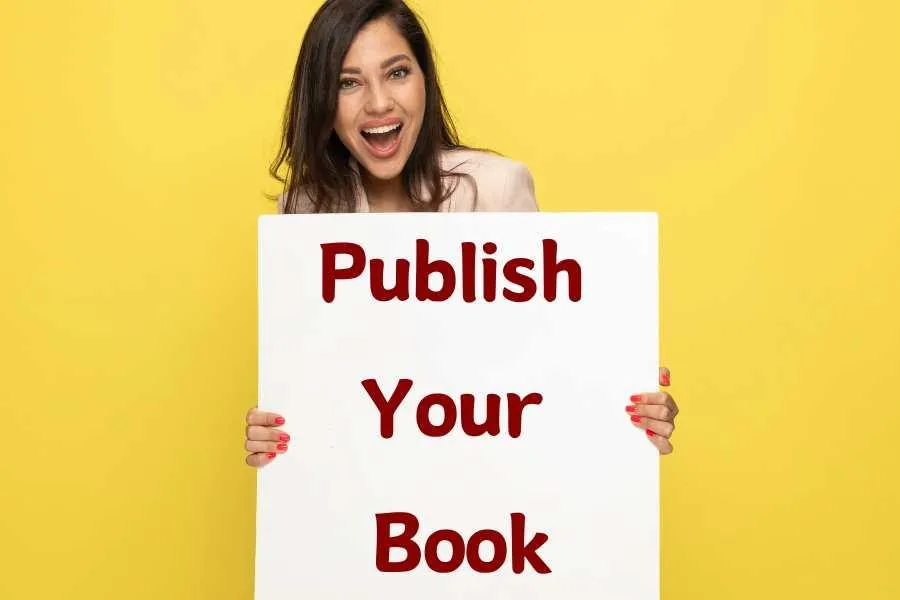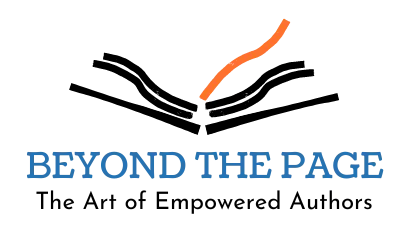Welcome to the BEYOND THE PAGE Blog!
Whether you're just starting out or seeking to elevate your author journey to new heights,
Beyond The Page, is your go-to resource for all things non-fiction writing, publishing and marketing books.
Every Tuesday, you'll receive invaluable insights, tips, and strategies tailored
specifically for aspiring and seasoned non-fiction authors alike.
Led by industry veterans Michael Harris and Heather Andrews, whose collective
experience spans over 40 #1 bestselling books, our mission is to empower
authors to bring their impactful stories and expertise to the forefront.
Stay tuned each week for fresh, insightful content designed to fuel
your writing journey and propel you toward literary success.
Let's make your author dreams a reality together!

Understanding the Best Way to Publish Your Book
Publishing a non-fiction book is a significant achievement that involves making critical decisions about how to bring your work to the market. The publishing landscape offers several routes, each with its own set of advantages and challenges.
Here, we explore the three main types of publishing: Self-Publishing, Traditional Publishing, and Hybrid Publishing. Understanding these options will help you determine the best path for your manuscript and your career as an author.

Self-Publishing
Control and Creative Freedom
Self-publishing provides authors with complete control over every aspect of the publishing process. From writing and editing to cover design and marketing, the author makes all decisions. This level of control is appealing to many writers who have a clear vision for their book and want to maintain artistic integrity.
Costs and Financial Investment
The flip side of this control is the financial investment required. Self-publishing authors bear all upfront costs, including editing, formatting, cover design, and marketing. While this can be costly, it also means that all profits from book sales go directly to the author. Typically, self-published authors can earn between 70-100% of royalties, much higher than the percentages offered by traditional publishers.
Distribution and Reach
Self-publishing platforms like Amazon Kindle Direct Publishing (KDP), IngramSpark, and others have made it easier than ever to get your book into the hands of readers. However, distribution is often limited to online platforms, and getting your book into physical bookstores can be challenging.
Marketing and Promotion
Marketing is entirely the author's responsibility in self-publishing. This includes everything from social media promotion and email marketing to arranging book signings and securing reviews. While this allows for a personalized marketing strategy, it can be time-consuming and requires a certain level of expertise in marketing and public relations.
Quality Control
Quality control in self-publishing can vary significantly. It depends on the author's willingness to invest in professional editing and design services. While some self-published books are indistinguishable from traditionally published ones, others suffer from a lack of professional polish.
Timeline
One of the biggest advantages of self-publishing is the speed to market. Authors can publish their books within weeks or months, as opposed to the lengthy timelines associated with traditional publishing.

Traditional Publishing
Control and Creative Input
Traditional publishing involves securing a contract with a publishing house, which then takes over the production, distribution, and marketing of the book. While this means less creative control for the author, it also means benefiting from the expertise of professional editors, designers, and marketers.
Costs and Financial Considerations
In traditional publishing, the publisher covers all production and marketing costs. Authors typically receive an advance against royalties and then earn a percentage of sales (usually 10-15%) once the advance is recouped. This model reduces financial risk for the author but also means lower royalty rates.
Distribution and Prestige
Traditional publishers have extensive distribution networks, making it easier to get books into bookstores, libraries, and other retail outlets. Books published traditionally often carry more prestige, which can open doors to media coverage, awards, and speaking opportunities.
Marketing and Support
While traditional publishers handle the bulk of marketing, authors are often expected to contribute through book tours, social media engagement, and other promotional activities. However, the publisher’s marketing team provides substantial support, leveraging established relationships and strategies.
Quality Control
Books published traditionally are subject to rigorous editing and production processes, ensuring high quality. Professional editors, proofreaders, and designers work on the manuscript to produce a polished final product.
Timeline
The traditional publishing process is notoriously slow, often taking 12-24 months from manuscript acceptance to publication. This timeline includes multiple rounds of editing, design, printing, and marketing preparations.

Hybrid Publishing
Control and Collaboration
Hybrid publishing is a middle ground between self-publishing and traditional publishing. Authors retain more control than in traditional publishing but benefit from professional services and guidance. This collaborative approach allows authors to influence the creative process while receiving expert support.
Costs and Investment
Hybrid publishing involves a shared cost model. Authors typically pay a fee for the services provided by the publisher, such as editing, design, and marketing. While this requires an upfront investment, it’s usually less than the total costs of self-publishing, and some hybrid publishers offer payment plans or profit-sharing arrangements.
Royalties and Revenue
Royalties in hybrid publishing are higher than traditional publishing but lower than self-publishing, typically ranging from 30-50%. Some hybrid publishers also offer small advances, combining the financial aspects of both traditional and self-publishing models.
Distribution and Reach
Hybrid publishers often have good distribution networks, covering both online and physical retailers. This offers authors wider reach than self-publishing, although it may not match the extensive networks of traditional publishers.
Marketing and Promotion
Marketing is a collaborative effort in hybrid publishing. Authors work with the publisher’s marketing team to develop and execute a promotional strategy. This support can be invaluable, combining the author’s unique perspective with professional expertise.
Quality Control
Hybrid publishing maintains high standards of quality control. Authors benefit from professional editing, design, and production services, ensuring a polished final product that can compete with traditionally published books.
Timeline
The timeline for hybrid publishing is generally faster than traditional publishing but slower than self-publishing. Authors can expect their books to be published within a few months to a year, allowing for a thorough yet efficient production process.
Choosing the Right Path
Deciding which publishing route to take depends on your goals, resources, and preferences as an author.
Self-Publishing is ideal for those who value creative control and are willing to invest time and money upfront.
Traditional Publishing suits authors seeking prestige, extensive distribution, and professional support, who are also prepared for a longer wait time and less control.
Hybrid Publishing offers a balanced approach, providing professional services and wider distribution while allowing authors to retain more control and receive higher royalties.
Each path has its unique advantages and challenges, and understanding these will help you make an informed decision about how to share your non-fiction book with the world.
Discover how to write your first book with our free writing 1.0 program.
Time to write your first or next book!
by Michael Harris,
#1 Bestselling Author and Co-Founder of Authors Empire

Join Our Free Authors Community
Authors Empire
Share the Love
If you know someone who will benefit from this newsletter,
then please forward it to them.
We Love Talking Everything Books
To discuss your book idea
Schedule a Complimentary Call

Email: [email protected]
Privacy Policy | Terms | Disclaimer
Copyright 2024 . All rights reserved

Copyright © 2024, Get You Visible Inc.

